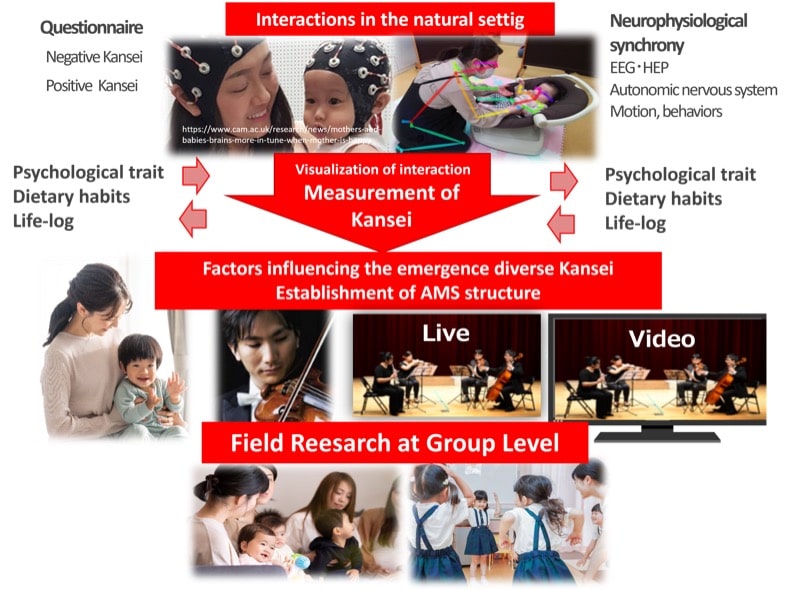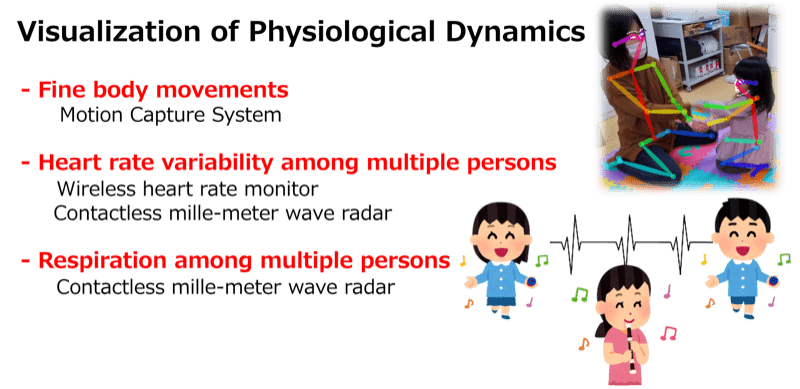Progress Report
Innovation in “Mental Capital” through Awareness Music and creation of new liberal arts3. Dynamics of integrating interoception and exteroception in parent–infant musical engagement
Progress until FY2022
1. Outline of the project
In today’s society, where the nuclear family is increasingly the norm, a rising number of parents (mothers) suffer from isolation and excessive stress. In addition, the number of children who are forced to grow up in abusive or otherwise inappropriate environments, as well as the number of children who are addicted to the Internet, bullied, truant from school, or committing suicide, is increasing markedly. Changes associated with the Covid-19 pandemic have accelerated these problems.
To address the pressing issues surrounding parenting, we aim to understand the physiological and psychological dynamics that occur during parent–infant interactions in natural settings. Using a visualization process, we develop “personalized” methods for parenting support by promoting parent–infant musical engagement. Our ultimate aim is to create an Awareness Music Sound (AMS) approach for KANSEI development, which effectively reduces physiological and psychological stress while elevating joy and self-efficacy within each parent–infant pair.

2. Outcome so far
Development of a Hyperscanning Electroencephalogram (EEG) and electrocardiogram (ECG) Measurement System for Studying Infant?Caregiver Interactions
Heartbeat-evoked potentials (HEP), which are considered one of the biomarkers of KANSEI have been validated in human infants. Measurements revealed HEP responses (positive peaks) from frontal to central regions during a resting state. In addition, the experience of receiving affective touch (touch that affects interoception) increased the activity of HEPs in infants.

Field experiment on parent–infant musical engagement
We implemented a field experiment to collect biometric data without (as much as possible) constraining the bodies of the infants and their parents as they listened to awareness music together. To this end, in addition to a wireless heart rate monitor and a markerless motion capture camera, we introduced a sensor system (in collaboration with Prof. Takuya Sakamoto, Graduate School of Engineering, Kyoto University) that measures respiration, and heart rate without contact.
3. Future plans
- Visualize the dynamic transition of neurophysiological synchronization between parents and infants using multimodal biometric measurements.
- Investigate the relationship between the results of the experiments and the positive/negative KANSEI (subjective feeling) exhibited by each parent and infant.
- Conduct field experiments to evaluate the physiological, psychological, and behavioral characteristics of several parent–infant pairs during the awareness music experience at Kyoto University
(MYOWA Masako, Kyoto University).
